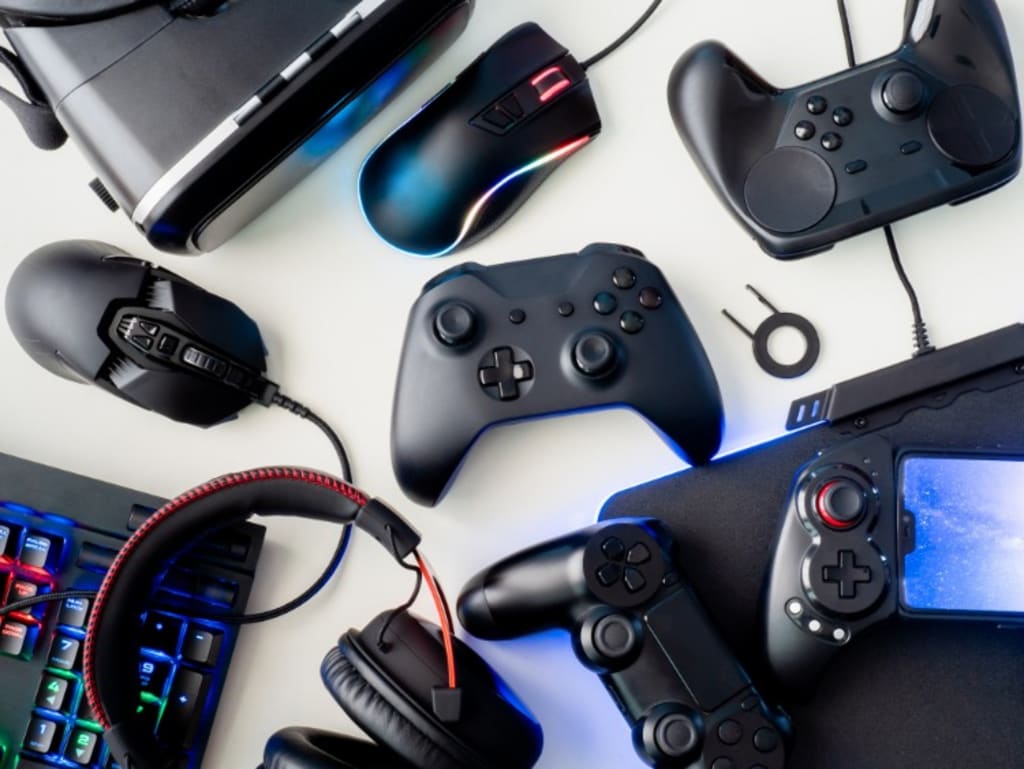Gaming Hardware Market: Trends and Forecasts
According to a report by Brandessence, the global gaming hardware market was worth $51.2 billion in 2020, with the console segment accounting for the largest share (47%) of the market. The PC gaming hardware market accounted for 28% of the market, while the peripheral market (including keyboards, mice, and controllers) accounted for the remaining 25%.

Gaming has become one of the most popular forms of entertainment in recent years, with millions of people playing games on a variety of devices. This has led to a surge in demand for gaming hardware, such as gaming laptops, desktops, monitors, and peripherals. In this article, we'll take a closer look at the gaming hardware market, its trends, and forecasts.
Introduction
In recent years, gaming hardware has become an essential part of the gaming experience. With the rise of competitive esports, more and more gamers are looking to invest in high-quality gaming hardware that can provide them with an edge over their opponents. This has led to a surge in demand for gaming hardware, as gamers look for devices that can deliver top-tier performance.
Market Drivers
There are several drivers that contribute to the growth and development of the gaming hardware market. Some of the main drivers include:
Increasing popularity of gaming: Gaming has become a mainstream form of entertainment, with millions of people playing games on various platforms. The rise of esports and online gaming has further fueled the demand for gaming hardware.
Advancements in technology: The gaming industry is constantly evolving, and hardware manufacturers are always looking for ways to improve the gaming experience. Advancements in technology, such as higher resolution displays, faster processors, and more powerful graphics cards, are driving the demand for gaming hardware.
Growing disposable income: As the global economy improves, more people have disposable income to spend on leisure activities such as gaming. This is particularly true in emerging markets where there is a growing middle class with more disposable income.
Increasing demand for virtual reality: Virtual reality technology is becoming increasingly popular, and many gamers are looking for hardware that can provide a more immersive VR experience. This has led to a growing demand for VR-ready hardware such as high-end graphics cards and VR headsets.
Growth of mobile gaming: Mobile gaming has become a huge market, and many gamers are looking for high-performance mobile devices that can provide a better gaming experience. This has led to the development of gaming-focused smartphones and tablets with powerful processors and high-quality displays.
Market Challenges
The gaming hardware market faces a variety of challenges that can impact its growth and profitability. Here are some of the key challenges that the gaming hardware market may face:
Increasing competition: As the demand for gaming hardware increases, more and more companies are entering the market. This leads to increased competition and puts pressure on companies to differentiate themselves and offer unique features or competitive pricing.
Rapid technological advancements: The gaming industry is constantly evolving, with new technologies and hardware being released regularly. This means that gaming hardware companies need to keep up with these changes and continuously invest in research and development to stay ahead of the curve.
High manufacturing costs: Producing gaming hardware can be expensive due to the need for specialized components and the high-performance standards required. Companies may face challenges in keeping manufacturing costs low while still delivering quality products.
Supply chain disruptions: The gaming hardware market relies heavily on global supply chains, which can be vulnerable to disruptions such as natural disasters, political instability, or pandemics. Any disruption to the supply chain can lead to delays or shortages of gaming hardware products.
Changing consumer preferences: The gaming hardware market is heavily influenced by consumer preferences and trends. Companies must be able to adapt quickly to changing consumer needs and preferences, or risk losing market share to competitors.In conclusion, the gaming hardware market is experiencing substantial growth and is a flourishing industry. The current trends in the market include the surge of esports, the adoption of virtual reality, and the increasing demand for gaming laptops. However, manufacturers must navigate challenges such as price sensitivity, short lifecycles, and intense competition. To capitalize on opportunities, manufacturers can focus on growth in emerging markets, increasing demand for high-performance hardware, and diversification into adjacent markets. As the gaming industry continues to expand, the gaming hardware market holds great potential for a bright future.





Comments
There are no comments for this story
Be the first to respond and start the conversation.